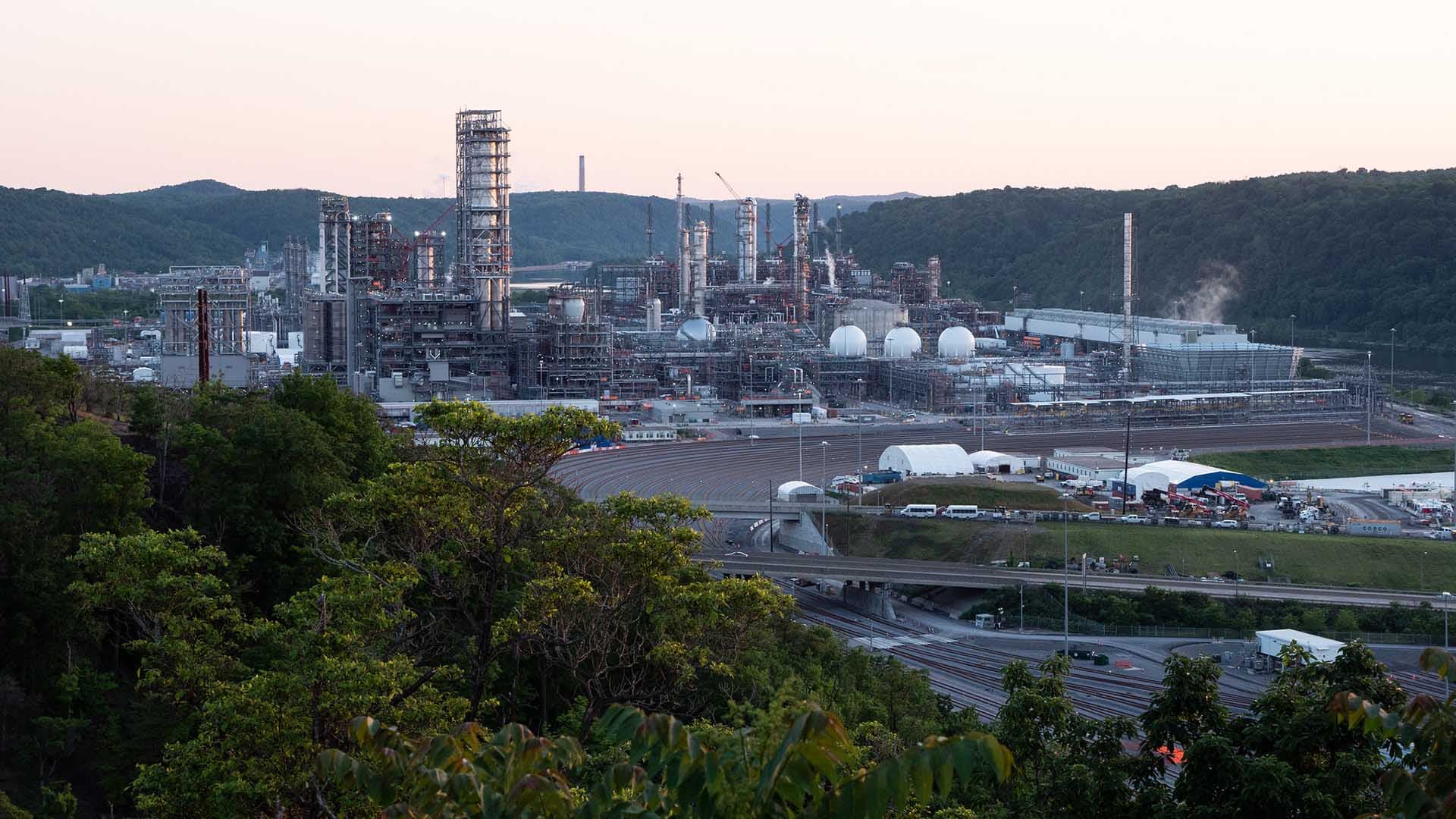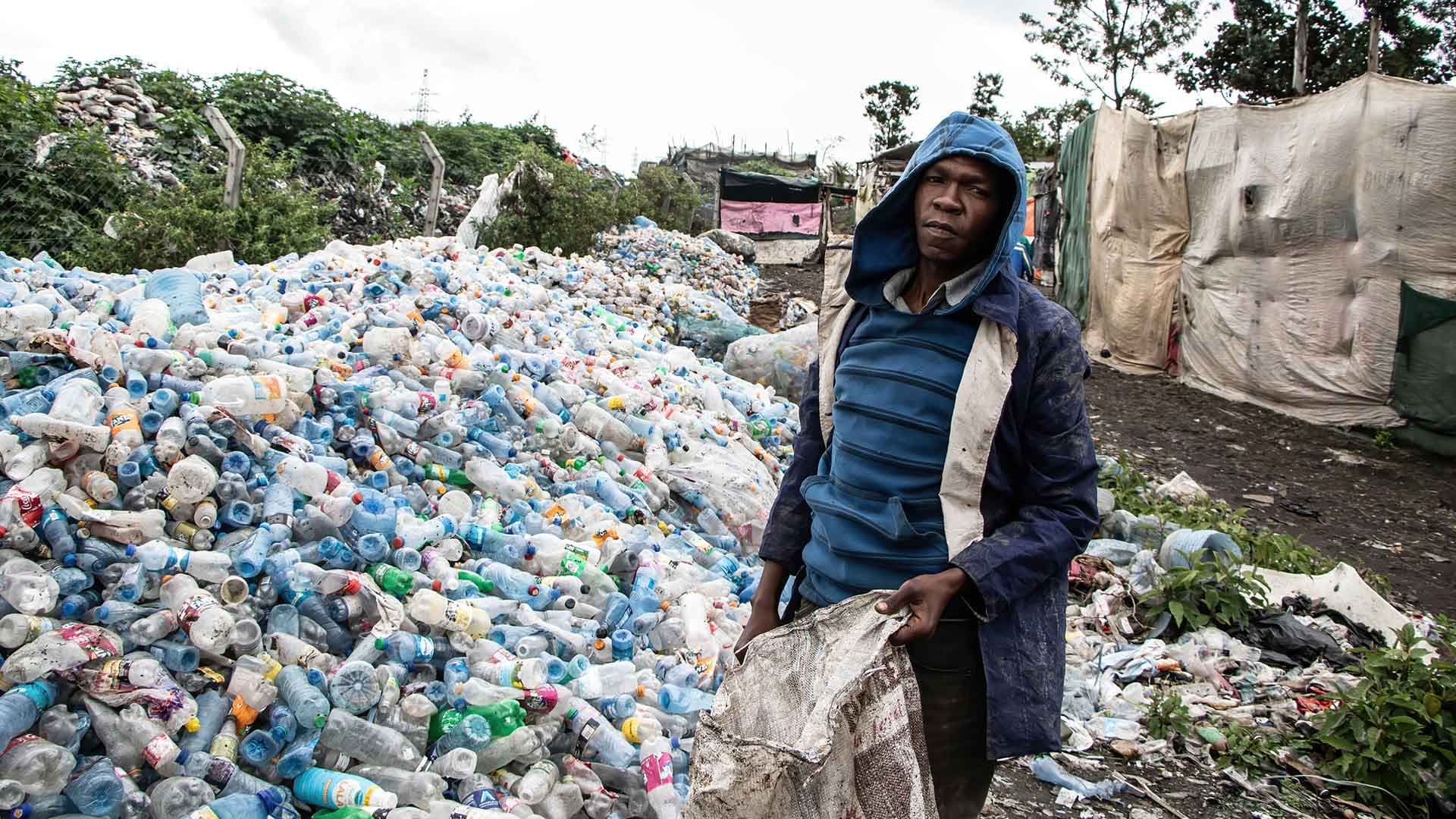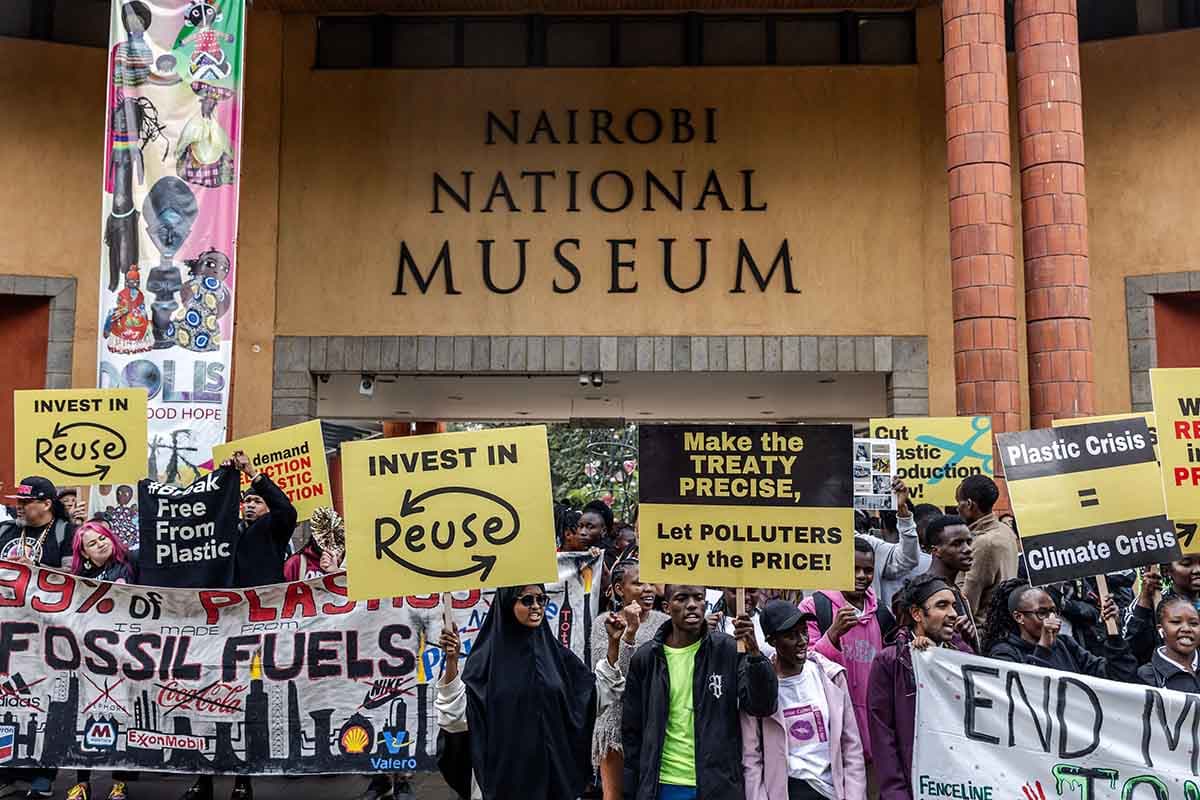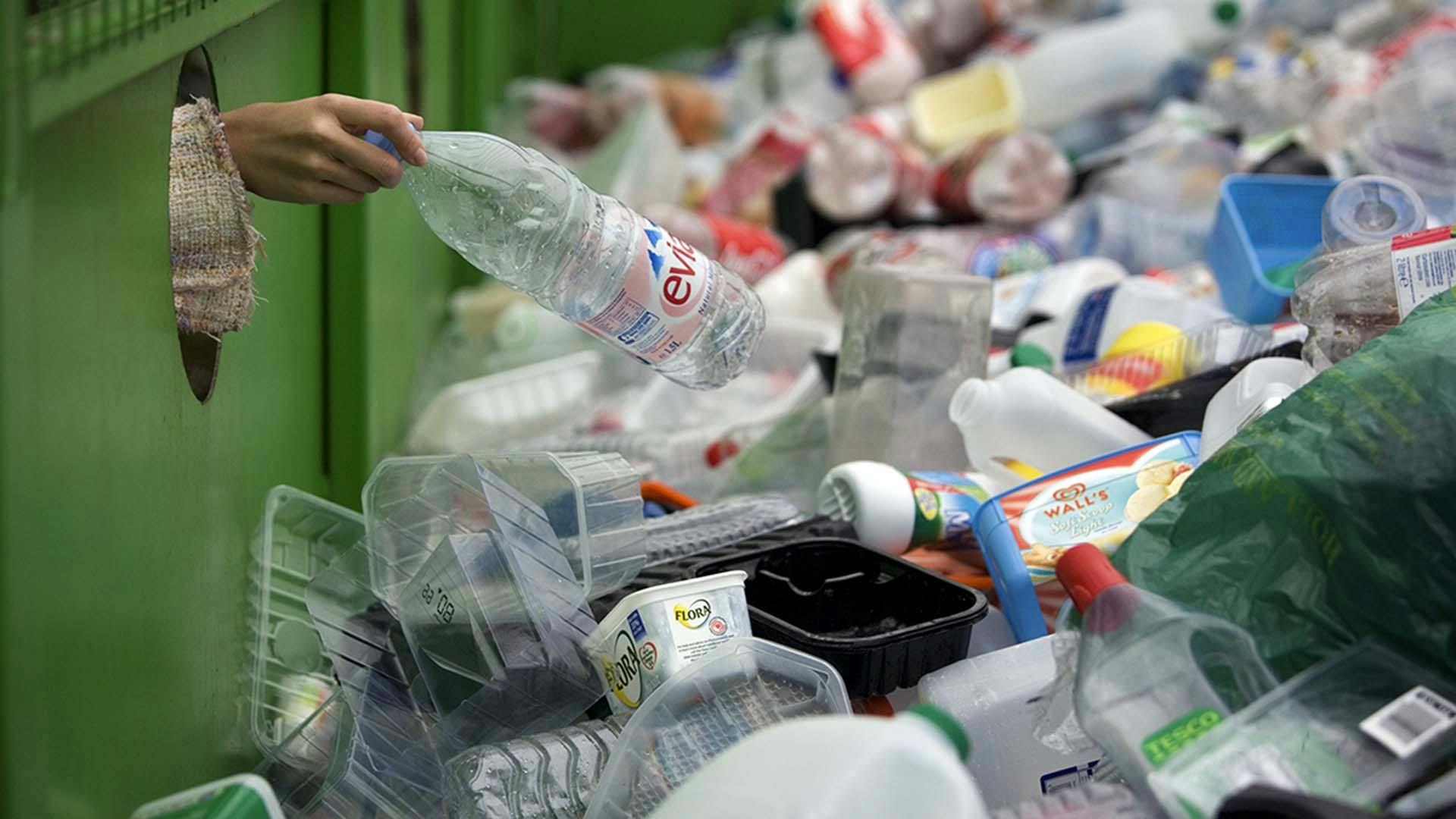Tiny bits of plastics are all around us: in our oceans and rivers, in our soil and food, in the dust that accumulates in our homes and offices.
But are they inside of us?
Which human organs do plastics accumulate in? How much is in our blood? Are plastic particles small enough to cross the barrier into our brains?
A team of Australian scientists set out several years ago to answer these questions, which have ramifications for all of humanity.
But to identify the presence of plastic in samples taken from human tissue, they couldn’t simply put a slide under a microscope to take a look. When searching for particles tiny enough to cross the blood-brain barrier – perhaps 1,000 times smaller than the width of a human hair– there are potential sources of contamination everywhere.
That’s because plastic is everywhere. An errant speck drifting off a lab coat, a light switch, or a ceiling tile could skew the results.
To ensure a contamination-free environment, scientists at the University of Queensland in Brisbane designed a laboratory made almost entirely out of stainless steel: steel walls, steel floor, steel ceiling, and filters circulating the room’s air several times a minute to catch any particles slipping by.
The laboratory now marks a frontline of what scientists warn is a global battle with plastic pollution, one in which the public is largely flying in the dark when it comes to their own health.
“We’re doing this massive experiment on ourselves and it all comes from fossil fuel-based plastic,” said Sarah Dunlop, head of the Plastics & Human Health program at the Minderoo Foundation, a Perth-based philanthropic organization funding the lab in Queensland.
This global experiment is now at an inflection point. There is already more than a literal ton of plastic for every human on Earth, and production is projected to continue growing as the fossil fuel industry pivots away from using oil and gas for energy, and into making petrochemical products like plastics. This week, nations from across the world are gathering in Nairobi, Kenya, under the banner of the United Nations, as they work feverishly toward a potential global treaty to rein in plastics.
An under-studied health risk
Research shows plastics pose health risks throughout their life cycle, from fossil fuel extraction to factory production to consumer use. The exposures of workers and fenceline communities to toxic plastic chemicals poses the most acute risk, with researchers estimating at least $250 billion in global health costs from plastic production.
But scientists are still working to understand the full health risks of plastics, especially to the general public, which is regularly exposed to tiny bits of plastic in food, water, and commercial products.
Over the past several years, Dunlop and colleagues at the Minderoo Foundation performed an exhaustive dive into global health studies, screening more than 100,000 papers created since 1960 that sought to illuminate what plastics and their myriad ingredients could be doing to humans. They identified about 4,000 relevant studies and organized them by which chemicals were found in humans and what health effects they might be producing, releasing their results this October.
They found that about 45% of the studies had been conducted only in the past five years, despite plastics now being mass-produced for more than seven decades. The studies were also so varied that Minderoo’s scientists have to perform a second robust analysis, now underway, to identify common health effects. Already, one of the most shocking results to researchers was they couldn’t find a single study specifically examining the health effects of microplastics on humans, adding even more impetus for the work now taking place inside the steel lab.
“The problem we found was that, in order to be able to get an umbrella review, you really need primary studies,” said Bhedita Seewoo, a neuroscientist and research associate at Minderoo. “And so many chemicals haven’t even been studied.”
And yet, scientists across the globe believe they already know enough to be deeply troubled. While the toxicities of plastics are obfuscated by their incredible variation and ubiquity, they say, there’s enough data on specific plastic constituents to trace the broad outlines of impacts to global health.
The core ingredients of almost all plastics stem from fossil fuels and present their own health hazards. But it’s the thousands of chemical additives – some well studied, but many not at all – that most worry researchers like Philip Landrigan, an epidemiologist and director of Boston College’s global public health program and Global Observatory on Planetary Health.
“It’s the chemicals inserted into plastics that account for most of the toxicity. And those chemicals include some bad actors,” Landrigan said. “Carcinogens, chemicals that are toxic to the nervous system, chemicals that disrupt the endocrine system.”
In March 2023, Landrigan, Dunlop, and dozens of other researchers spanning six continents released a report making a best estimate of the harms of plastics and associated chemicals and their costs to society. In the United States alone, the report calculated, plastics-related chemicals contribute to 85,000 premature deaths each year, along with $675 billion in health costs. That says nothing of the impacts to low- and middle-income countries, where plastic waste often winds up in open-air dumps or is even used as cooking fuel.
Oil and gas workers extracting fossil fuels to feed plastic production “suffer increased mortality” from a variety of cardiovascular diseases, including lung cancers, the report concludes. Workers at plants that convert fossil fuels to plastics are at elevated risks of leukemia, breast and brain cancers, and decreased fertility. Residents of communities near these plants face reproductive harms, asthma, cardiovascular diseases, and cancers.
But perhaps most insidious are risks that come from everyday exposures to a variety of chemicals as people go about their daily lives.
Mohamed Abdallah, a researcher at the University of Birmingham in the United Kingdom, has studied how people are exposed to tiny bits of plastics and their chemical additives. The routes are alarmingly mundane: small particles, invisible to the naked eye, flake off of plastic bottles and other products as we manipulate them with our hands, and microfibers brush off synthetic carpets as we kick across them with our feet. These bits then accumulate in household dust, revealing themselves as we sweep up a pile on the floor or catch them floating through the air in a sunbeam, then entering our bodies as we touch or inhale them.
Consider the plastic yellow ducky, Abdallah said.
“What happens when a child is mouthing a rubber duck is actually two things. The first thing, if the rubber duck had a layer of indoor dust on top of it, then the child would be mouthing the dust and ingesting it,” Abdallah said. “The second thing is, the saliva and the friction of the plastic toy, would result in the degradation of small pieces of plastic, which we call microplastics, and then the toddler would be ingesting it as well.”
Exactly what happens when microscopic bits of plastic enter the body is a mystery, thus the need for the steel lab. But Landrigan and other researchers are already concerned that exposure to chemicals used in plastics, such as bisphenols and phthalates, may be contributing to population-wide increases in autoimmune diseases, diabetes, developmental disorders such as autism, some cancers, and other ailments.
Youngsters are particularly at risk, due to the vulnerability of fetuses and babies as their biological building blocks are being assembled.
“It’s ghastly,” Dunlop said. “You’re talking about the right to life: miscarriage. You’re talking about what it is to be human: loss of IQ points, childhood development.”
And yet, the plastic onslaught continues, buoyed by increased use in automobiles, construction materials, and packaging. A landmark 2017 study estimated that since the 1950s, more than 8.3 billion tons of plastic have been produced. And in a United Nations Environment Programme report released this year, the agency said humanity is adding another 438 million tons each year and growing, potentially to 1.1 billion tons annually by 2050.
With plastic drawing increased scrutiny from the public and regulators, battles are popping up as the industry promotes responsible consumer behavior and new methods of recycling as solutions, while critics decry such approaches as ineffective and argue governments must instead cut plastic pollution at the source by capping production.
It’s into this fray that U.N. members step as they try to hash out a global treaty on plastics. And Landrigan says despite the ubiquity of plastics, if past efforts to curtail harmful substances like lead are any indication, it can be done.
“Countries know how to do this stuff,” Landrigan said. “If we want to control plastic pollution, we can do it.”
Red skies, strange smells: Living in the shadow of a plastics plant

For decades Terrie Baumgardner has lived in Southwest Pennsylvania, where steel mills once dominated the hilly landscape and contributed to some of the worst air quality in the United States. But while that industry has largely receded, another one is ramping up: plastics.
After years of controversy, the Shell Polymers Monaca plant, owned by a subsidiary of British fossil fuel company Shell, went online in 2022 and started converting natural gas into plastic pellets, a process known as “cracking.” Located in Beaver County, the 384-acre plant takes advantage of its proximity to Pennsylvania’s vast supplies of natural gas, tied up in a geologic formation called the Marcellus Shale.
Over the past decade and a half, industry has primarily tapped the formation’s copious gas deposits for energy production. But now, the Shell plant is also using it for the annual production of 1.6 million tons of polyethylene pellets, couscous-like bits of plastic that are then further manufactured into a wide range of products.
To make the plastics, the plant is legally allowed to emit volatile organic compounds, a family of chemicals linked to smog and health effects. But the plant has also suffered a variety of malfunctions, requiring it to burn off extra gasses through “flaring,” a process in which large fiery plumes shoot into the air. After dark, residents can often tell when the flare is firing by the red glow it casts on the night sky.
Within five months of opening in November 2022, the Monaca plant repeatedly operated outside of legal limits, accumulating more than a dozen air quality violations and reporting more than 43 malfunctions, according to StateImpact Pennsylvania. In May, Shell agreed to pay state regulators $10 million for the repeat violations and also faces a private lawsuit from the nonprofits Clean Air Council and Environmental Integrity Project over what they say are ongoing issues.
“They have basically built a chemical plant all around us."
Clifford Lau, retired organic chemist who now works with the Clean Air Council
Baumgardner, who lives about four miles from the plant and is a community outreach coordinator for Clean Air Council, said residents have caught whiffs of gasoline smells, including a mysterious maple syrup odor that lingered for days in the leadup to the plant’s opening.
“The fact that it was maple syrup was not good, because there are toxic chemicals that smell like almonds and other good smells. It was never really clear what that was, but it riled up residents,” Baumgardner said.
In April, residents again widely reported odors and respiratory irritation after Shell drained a wastewater treatment plant at the site. But the company claimed that levels of benzene, a common plastics chemical with a wide range of short and long-term health effects, were too low at the plant’s fenceline to have caused the issues.
Neighbors have become deeply concerned about critical failures, especially after the East Palestine train derailment in February released 1.1 million pounds of vinyl chloride, a toxic chemical used in plastics, less than twenty miles away.
Clifford Lau, a retired organic chemist who lives in the region and once created plastics for German biosciences company Bayer AG, now brings a scientist’s eye to the Shell plant.
The former industry insider has been using special equipment and in partnership with the Clean Air Council, hunting for fugitive pollution from the plant in the surrounding air and water. Shell once tried to keep him off a scheduled tour of the plant, and then settled for sitting a handler right next to him on the bus ride in.
“I felt like a third grader on a field trip,” Lau said.
But, Lau said, the residents of Southwest Pennsylvania are already surrounded by plastics infrastructure. Gas pipelines and compressor stations dot the landscape, running right past homes and businesses. By night, drilling rigs light up what used to be dark patches of terrain.
“They have basically built a chemical plant all around us,” Lau said.
Worldwide risk

The industrial buildout of plastics is global in scale. As of 2019, the International Energy Agency found, about 12% of global oil demand was for petrochemicals, used to create plastics, fertilizers, and other products. But the IEA also predicted skyrocketing growth, with petrochemicals “set to account for more than a third of the growth in world oil demand” by 2030, and nearly half the growth by 2050.
And unlike many polluting industries, typically housed in the developing world and hidden away from the eyes of wealthy nations, the cheap abundance of natural gas in the United States has led to robust build outs on the country’s Gulf Coast and Appalachian region. The U.S. now accounts for 40% of the global ethane-based petrochemical production capacity. China and European nations also remain major producers of other fossil fuels and chemicals used in plastics, according to the EIA.
Veena Singla, a senior scientist at the nonprofit Natural Resources Defense Council, adds that citizens of wealthy nations also face daily exposures. In 2016, Singla co-published a study finding that dust in U.S. homes “consistently contains” a mix of toxic chemicals, many found in plastics. As the country has no regulations on indoor dust or air quality, Singla and colleagues substituted soil screening levels established by the U.S. Environmental Protection Agency and found that several phthalates and flame retardants – dangerous chemicals often added to plastics and furniture – on average exceeded safety limits for health effects, including those guarding against cancer.
While Singla said the findings should give everyone a cause for concern, they are particularly alarming for communities living close to industry, whose residents are disproportionately lower income, Black and brown and have less access to quality health care.
Subscribe to our newsletter
Global health reporting, straight to your inbox
“Who faces the greatest health harms and risks? It’s those at the beginning and end of plastics’ life,” Singla said. “The amount of chemicals and materials that workers and fenceline communities are exposed to is the highest … and those folks also have all of the same exposures in their homes.”
Each year, mountains of plastic waste are shipped to low income countries in East Asia and the Pacific. Only a fraction of the imported waste is recycled; most is discarded in dumpsites or littered in the environment, according to the U.N.
Taylor Cass Talbott, a coordinator for WIEGO, a U.K.-based nonprofit supporting informal workers across the globe, says plastics are a complicated issue in low-income countries where they are dumped.
Many “waste pickers” – a term preferred by many of the estimated 20 million people across the world who make a living by sorting recyclables from formal or informal waste sites – actually depend on plastics. Research shows these workers face a variety of health risks, including chronic disease, chemical exposures and physical hazards.
But they also face more immediate realities: poverty, social stigmas, and even hunger if their work dries up. Their needs from a global treaty thus include both economic and health protections.
“Waste pickers who understand the health risks do express a concern over it,” Talbott said. “It’s a matter of, do you have a choice?”
A treaty to cut 'stupid plastic'

Despite all of the health risks from plastics that scientists say humanity faces, few, if any, are calling for their complete removal.
“Plastic clearly has beneficial uses … I can’t imagine life without it,” Landrigan said.
In an article penned for the Global Governance Forum this August, Landrigan and colleague Sarah Stimson Karis laid out potential steps to rein in the health risks of plastics. Many center around the U.N.’s “Intergovernmental Negotiating Committee,” a body formed in 2022 to work toward a Global Plastics Treaty. Delegates in Kenya are discussing the merits of a “Zero Draft Text,” the first framework of a potentially legally-binding treaty.
Landigran and Stimson Karis’ key recommendation, echoed by scientists and policymakers across the world, is the creation of a global cap on all plastic production. Countries would then create their own regulations in order to meet the new goals. Landrigan said a cap would have the effect of cutting out what he calls “stupid plastic.”
“I think it’s absolutely possible to distinguish between essential plastics like those we use every day in medicine, or in aerospace, or construction… and stupid plastics like plastic bags at the supermarket, plastic straws, or plastic knives and forks in the cafeteria lines,” Landrigan said.
The proposal goes hand-in-hand with a second recommendation to ban entirely or severely strict single-use plastics. A third major leg is to create more transparency around the chemicals added to plastics, many of which do not have toxicity data, or worse yet, are unknown to scientists due to poor regulations or laws that protect “trade secrets.”
“They approved the process in March of 2022 and they’re going to wrap it up at the end of 2024, which for the U.N. is quite rapid,” Landrigan said. “I applaud the fact that they’re doing it, I applaud the fact they’re moving at speed, and now they’ve got to get it right.”
Singla says in the United States, the EPA and sister agencies already have the power to regulate chemicals and products that pose a risk to health. But, advocates point out, policies under the EPA’s main chemical program have historically been rife with loopholes that endanger the public, and there is no sign plastic harms will be seriously curtailed anytime soon. Others say the U.S. and other major economies appear to be angling toward voluntary actions in any international treaty. Singla says this creates a need for everyday Americans to place more pressure on lawmakers to address plastics.
“If we can really build the political will, we already have a lot of the tools we need to take action on this problem,” Singla said.
